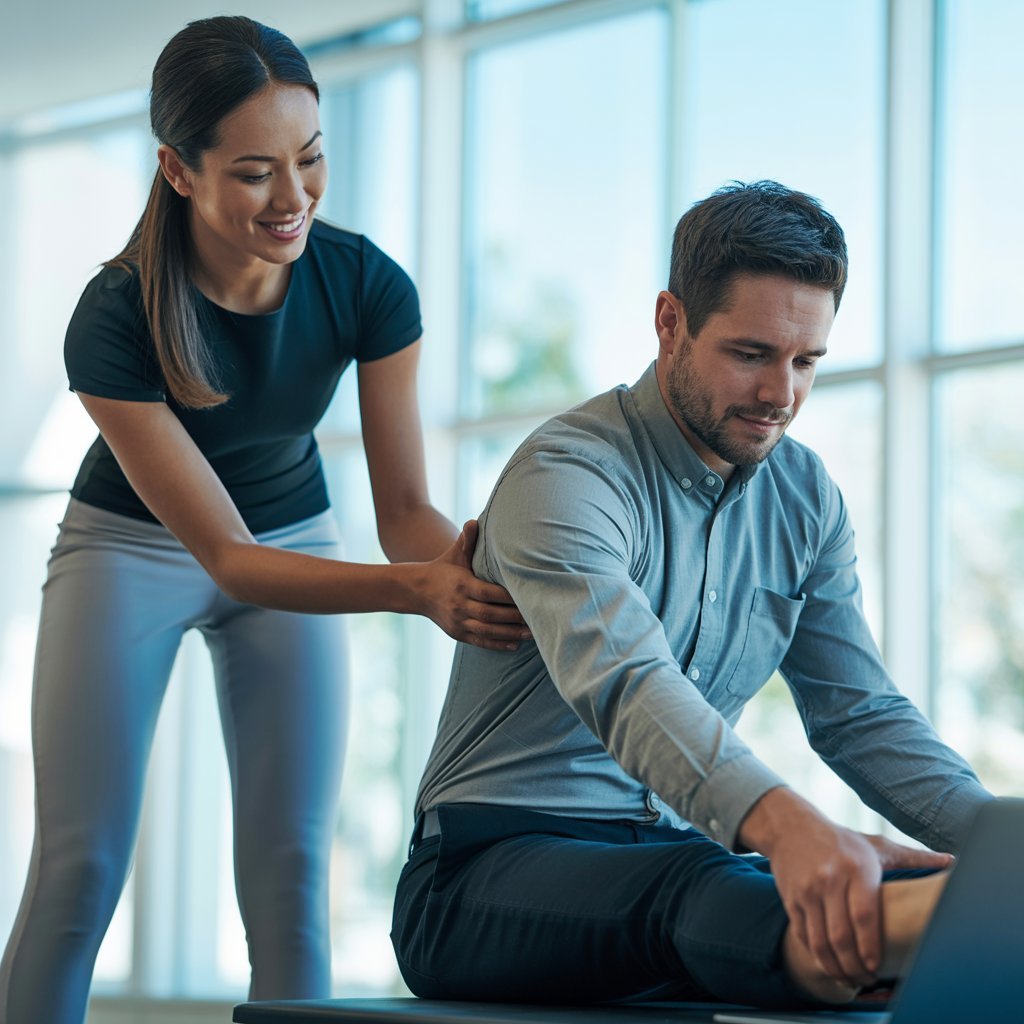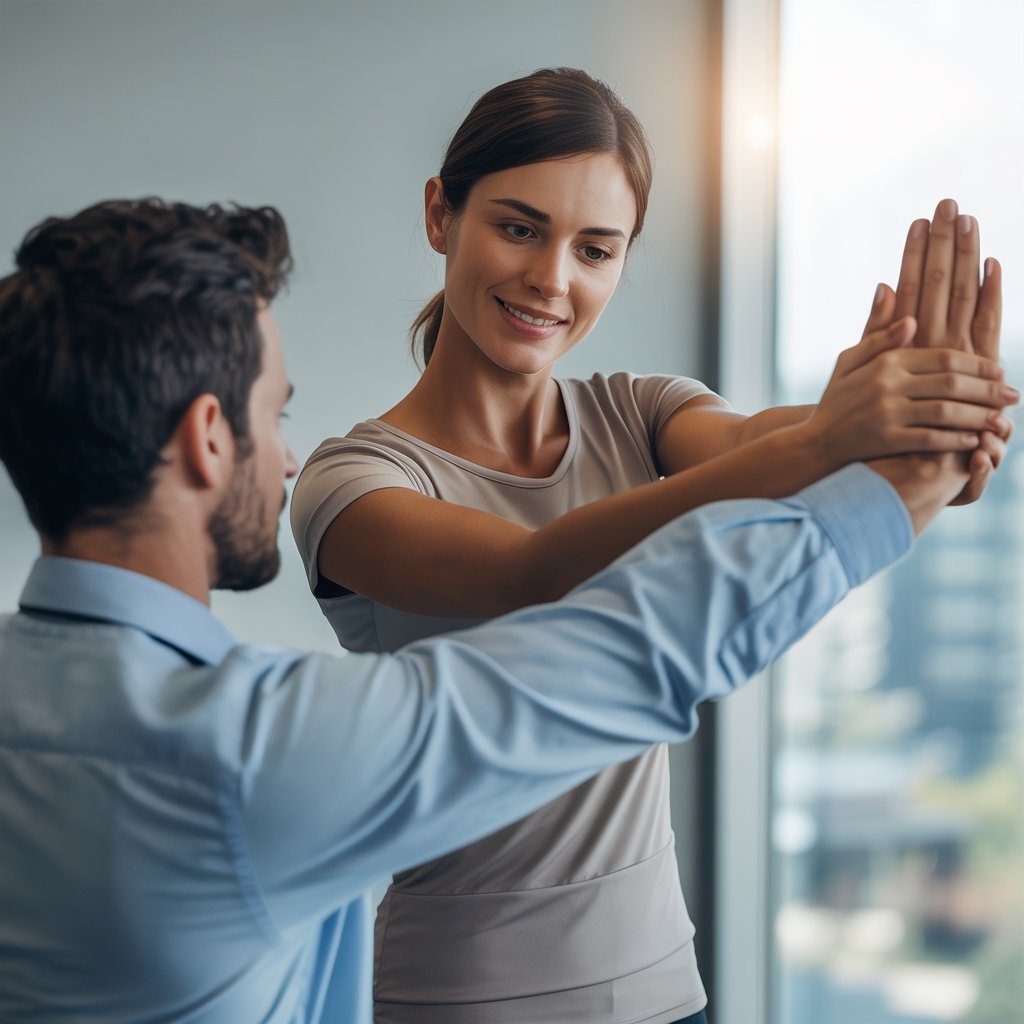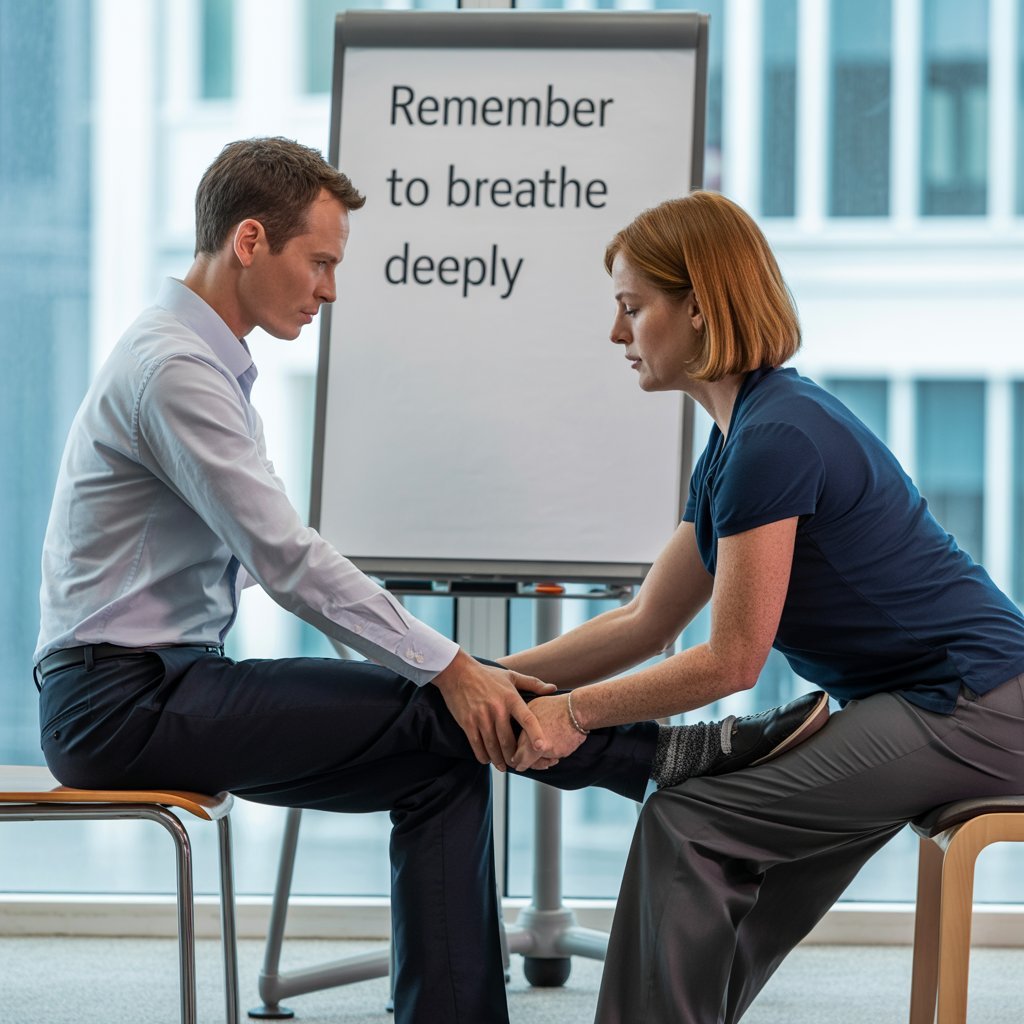Physical Address
304 North Cardinal St.
Dorchester Center, MA 02124
Physical Address
304 North Cardinal St.
Dorchester Center, MA 02124

Ever find yourself hunched over your laptop at 3 PM, neck stiff, shoulders rounded, and wondering if your spine has quietly staged a walkout? If you’re an office worker in the UK, chances are you’ve felt the aches and tension that come with modern desk life. But what if I told you there’s a way to reclaim your flexibility, improve your posture, and even boost your mood—all without breaking a sweat at the gym? Welcome to the world of assisted stretching for office workers.
Let’s start simple: assisted stretching is exactly what it sounds like. Instead of stretching on your own, a trained professional (think: a stretch therapist, not your mate from the pub) guides your body through a series of movements designed to target tight spots and unlock your full range of motion. For office workers, that means focusing on the neck, shoulders, hips, and lower back—those classic “I’ve-been-at-my-desk-all-day” trouble zones.
It’s a whole different beast entirely from regular stretching. Think of it as stretching with a personal trainer, but instead of barking at you to do more burpees, they’re gently coaxing your tight muscles back to their happy place. The magic happens because someone else is controlling the stretch intensity and duration while you simply relax and let your muscles surrender to the process.
The benefits of assisted stretching are more than skin deep. Your body wasn’t designed to sit in a chair for eight hours a day, five days a week. When you’re glued to your desk, your hip flexors shorten, your glutes go on holiday, your shoulders round forward, your neck juts out, and your upper back develops more curves than a mountain road. This creates what I like to call the “Perfect Storm of Office Worker Dysfunction.”
Here’s how assisted stretching helps:
| Benefit | How It Helps Desk Workers |
| Flexibility | Reduces stiffness from prolonged sitting |
| Posture Improvement | Corrects slouching and rounded shoulders |
| Pain Relief | Eases neck, shoulder, and lower back pain |
| Stress Reduction | Calms the nervous system, boosts mood |
| Injury Prevention | Strengthens muscles, reduces risk of strains |
| Enhanced Mobility | Makes everyday movement feel effortless |
Absolutely. If you’ve ever felt like your spine is auditioning for a role as a question mark, you’re not alone. Office workers are notorious for developing tightness in the upper back, neck, and hips due to hours spent sitting. Assisted stretching targets these areas, releasing tension and improving blood flow, so you can get through the workday without feeling like you’re 90 years old.
As one writer from London, Alasdair, put it: “By the end of the session, I could feel a real improvement—more mobility, less tension, and a surprising sense of ease throughout my body.”

There’s no one-size-fits-all answer, but most experts recommend starting with one or two sessions a week, especially if you’re new to stretching or dealing with chronic tightness. Over time, a regular routine—think once a week or even fortnightly—can keep you feeling loose and pain-free. Consistency truly trumps intensity every single time.
| Day | Activity | Duration |
| Monday | Professional assisted stretching | 60 minutes |
| Tuesday-Friday | Workplace stretching breaks | 5 minutes, 3x daily |
| Wednesday | Self-assisted stretching at home | 20 minutes |
| Weekend | Active recovery (walking, gentle yoga) | 30 minutes |
For the vast majority of people, yes. Assisted stretching is gentle, controlled, and tailored to your body’s needs. If you have a specific medical condition or chronic pain, it’s wise to check with your GP or a qualified Physiotherapist before starting. Some of the best stretch clinics, like StretchMasters®, always conduct a thorough assessment to ensure your safety and comfort. StretchMasters Stretch Clinics are led by experienced Physiotherapists who can conduct a thorough assessment of your needs and provide clinically sound recommendations to meet your goals.
Many chronic pain conditions that affect office workers—like fibromyalgia, chronic lower back pain, or persistent neck tension—actually respond beautifully to gentle, assisted stretching. The key is “gentle.” A skilled therapist understands the difference between therapeutic discomfort and harmful pain.
While a professional will tailor your session, certain stretches consistently hit the bullseye for desk-bound individuals. Here are some MVPs (Most Valuable Poses):
Picture this: you’re at home, half-heartedly reaching for your toes while scrolling Instagram with your other hand. Now, imagine a pro guiding your body through a deep, controlled stretch, using techniques like PNF (Proprioceptive Neuromuscular Facilitation) to safely push your limits. That’s the difference. Assisted stretching is more effective, more targeted, and—let’s be honest—a lot more relaxing.
| Aspect | Regular Stretching | Assisted Stretching |
| Guidance | Self-guided | Professional therapist |
| Depth of stretch | Limited by your own flexibility | Deeper, more controlled |
| Techniques used | Static, dynamic | PNF, myofascial release |
| Personalisation | Generic or self-selected | Tailored to your needs |
| Relaxation | You do the work | Therapist does the work |

Oh, you bet it can! Improving posture for office employees is one of the most compelling reasons to embrace assisted stretching. Assisted stretching works wonders for posture by releasing overly tight muscles, allowing your skeletal structure to settle back into a more neutral, balanced, and upright position. It also increases proprioception (body awareness), empowering you to correct your posture throughout the day.
While there are plenty of desk stretching exercises you can do solo (and I highly recommend you do!), nothing beats the expertise of a trained stretch therapist. Professionals at clinics like StretchMasters® use advanced techniques and a keen eye for detail to make sure you get the most out of every session.
However, you can absolutely do effective assisted stretching at home if you’re smart about it. You can try partner-assisted stretching if you have a willing partner, or self-assisted techniques using props like straps, walls, and doorways. A hybrid approach—one professional session per month combined with regular home practice—often gives you the best of both worlds.
Most sessions run between 30 and 60 minutes—just enough time to hit all your trouble spots without eating into your lunch break or after-work plans. Think of it as a power nap for your muscles (minus the drooling).
| Goal | Session Length | Frequency |
| Initial correction | 60 minutes | 2x per week for 4 weeks |
| Active improvement | 45 minutes | 1x per week for 8 weeks |
| Maintenance | 30-45 minutes | 2x per month ongoing |
Expect a warm welcome, a quick chat about your health and goals, and a gentle assessment of your flexibility and movement. Your therapist will then guide you through a series of stretches, always checking in to make sure you’re comfortable. You’ll leave feeling lighter, looser, and maybe even a little taller. It should feel like a pleasant challenge, never painful.
For most people, the risks are minimal. You might feel a bit of soreness the next day (think: the good kind, like after a satisfying workout), but serious side effects are rare when you work with a qualified professional. As always, honesty is the best policy—let your therapist know about any injuries or concerns before you start. The key to mitigating risks is to choose a highly qualified, experienced, and reputable stretch therapist.

If you’re serious about feeling better, moving more freely, and keeping up with the demands of modern work life, assisted stretching is a game-changer. It’s not just about flexibility—it’s about reclaiming your body from the clutches of your desk chair.
Ready to feel the difference? Book a session with a trusted stretch therapist at Stretchmasters Stretch Clinic and experience the benefits for yourself. Your body (and your boss) will notice the difference. Now, go on—stretch yourself. You deserve it.
The information provided in this article, including any suggested stretches or routines, is intended for general educational purposes only and is not a substitute for professional medical advice, diagnosis, or treatment. The stretches described may not be suitable for everyone, particularly individuals with medical conditions, mobility limitations, or recent surgeries. Please consult your GP, physiotherapist, or a qualified healthcare provider before starting any new therapy or exercise program. Participation in any of the described activities is done at your own discretion and risk. Neither the author nor StretchMasters® accepts any responsibility for injury, loss, or damage resulting from the use or misuse of the information provided.